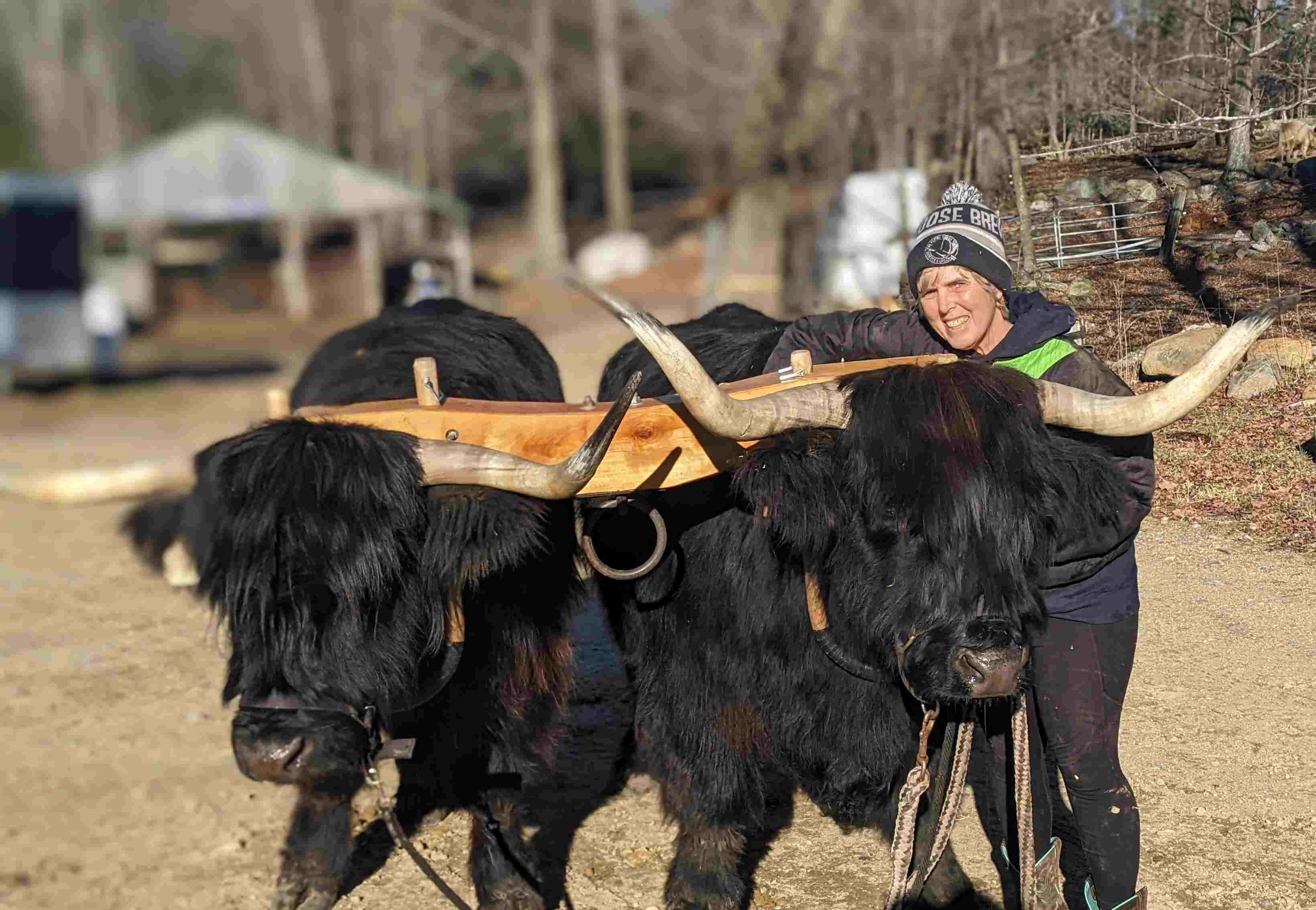Do You Want To Learn How To Ride A Cow?
posted on
October 22, 2020

I always wonder why some parents want to buy a young, untrained pony for their child. I was reminded of this lapse of judgment when I saw this funny sign at a riding stable:
For Fast Riders - We have fast horses.
For Slow Riders - We have slow horses.
For Those Who Have Never Ridden - We have horses that have never been ridden.
Training must be consistent because horses are smart and quickly learn bad habits. And just because a horse is small doesn't mean he'll be easy for a child to ride.
Chester Misbehaves
For instance, when I got him, Chester-the-Pony was challenging to lead. He would put his head down and drag me across the barnyard. It took about 10 minutes to re-train him to be led obediently. He still tests the human leading him, but he falls back in line with a quick snap of the lead rope.
Training is not a 100 percent guarantee against misbehavior. Some equines, with the rider still in the saddle, will attempt to dash into the barn. So, I always close the barn door when Chester's being ridden, just in case. He could make it through the door, but an inexperienced rider might be scraped off.
Some Horses Follow the Rules
On the other hand, I have a giant horse named Snap, who would never break the rules. If I want him to canter or trot in an endless circle, he will oblige, never once thinking of running to the barn.
My point is that training and the nature of the beast both matter. Expecting a 10-year-old to train a horse or pony is unrealistic. It makes more sense to buy an older, well-trained mount -- not necessarily small -- who knows the rules of riding and will take care of the child on his back.
How to Train A Calf
The first step, after he is weaned, is to teach the calf to be led. The next step is to get him used to carry weight. In the wild, when a predator jumps on a calf's back, he instinctively thinks the predator is trying to eat him.
So we start the calf off gradually by strapping on an empty saddle. Some calves buck and others don't mind. The ones that don't mind move to the next step: carrying grain bags filled with sand to simulate human weight. When the calf walks calmly with the sandbags on his back, I'll throw the bags to the ground to imitate a rider falling off. (Yes, it happens.) Next, I'll hang the bags from the saddle to simulate a rider being dragged with a foot caught in a stirrup. (Yes, that happens, too.) We don't want a mount to panic in those situations.
Don't Try This At Home
If you've ever trained horses, these techniques might sound familiar. While the process is similar, cows learn a lot faster than horses. And the bovine mind is different in other ways, too. Alert! There are lots of variations among cattle, so improvisation is needed.
Do You Want to Ride A Cow?
Training steers for riding has become a specialty here at Miles Smith Farm. Why? Why not? It's my idea of fun, and I'd love to show you how to do it. So, I'm offering a hands-on course consisting of four weekly lessons. You'll learn how to train a calf and also get to ride Curious Bleu, a fully-trained riding steer. To sign up or for more information, email me at beef@milessmithfarm.com or call 603 783 5159.
It might not be the most useful skill you'll ever acquire, but it could be the most interesting.



